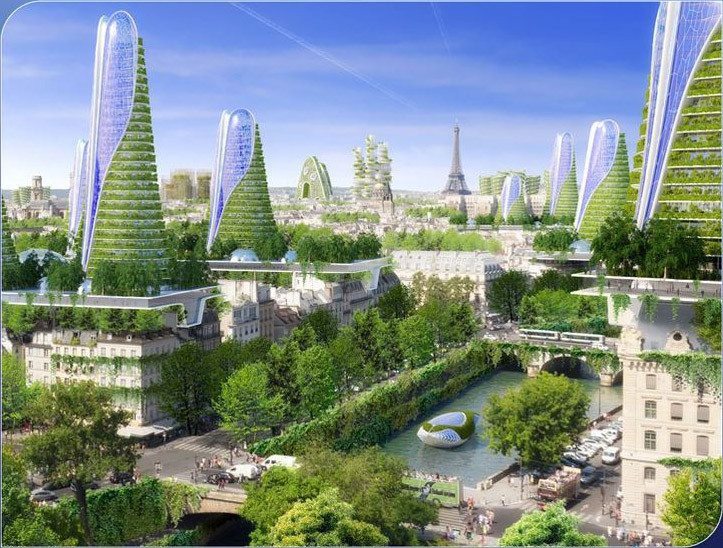Insights
Smart vs Green Cities: No Mixing Up Anymore

By Esraa Ali
Cities around the world are growing steadily. Likewise, the number of people living in urban areas around the world has doubled over the past 70 years, reaching 54% in 2015, and it also is expected to reach 66% by 2030, according to the United Nations Environment Programme 2018 report. This will certainly raise carbon emissions, pollution levels, waste production, and consumption of resources, especially energy, raw materials, and water. This will eventually lead to the abuse of the rights of future generations, thereby coming at odds with both the UN Sustainable Development Goals (SDGs) and the 2030 Agenda. New concepts for constructing cities came to the fore, including smart and green cities, in the light of the need to construct new cities that address these problems and challenges.
What’s a Smart City?
Intelligence and technology are intertwined, and there is a direct proportion between growth, development, and technology. Therefore, smart cities, with their features and characteristics, depend heavily on technology. The advantages of smart cities are numerous, and the following are but a few:
- Facilitating traffic in smart cities is usually more efficient and comfortable by installing the Intelligent Transportation System (ITS) that eases congestion and improves traffic management by sharing information.
- The Internet of Things (IoT) applications remotely control, manage, and monitor the entire city operations through the installation of different kinds of sensors in order to operate street lamps and enable different infrastructure stations/facilities, or to exchange real-time data and massive information with service centers inside and outside the smart city.
- Cloud Computing, with its efficient data analytics of things and people, namely, Geographic Information Systems (GIS), helps in anticipating crises and ensures operational readiness to different scenarios and national phenomena, as well as facilitating rapid intervention. On the backdrop, Cloud Computing helps in the formulation of economic policies.
- Ensuring a higher degree of road safety and security through vehicle-to-vehicle (V2V) and vehicle-to-infrastructure (V2I) communication allows cars to share information wirelessly about their location, speed, and heading with other vehicles, local infrastructure, and transportation modes. Accordingly, such wireless communication helps reduce accidents on highways through early warning messages.
- The rise and emergence of the sharing economy boosts the economy, either local, international, or even intercontinental. UBER can be considered as a typical example of this type of economy.
What’s a Green City?
Despite all of the abovementioned advantages of smart cities, their disadvantages, coupled with the negative impacts associated with technological transformation on the environment, in particular, cannot be overlooked. The impacts of urbanization on global warming cannot be denied as well. That’s why the need to build green or eco-friendly cities that take into consideration the urgency of protecting the environment. The characteristics of green cities include:
- The adoption of a green building code in accordance with specific international indicators. Noteworthy, Germany, Egypt, the United Kingdom, and many other countries have adopted green building codes.
- Shading the buildings in green cities with sun breakers or brise soleil in French by the cultivation of trees and climbing plants, and by designing green facades.
- The use of solar photovoltaic cells (PV cells) in order to generate electricity from sunlight in a clean and emissions-free manner.
- The adaptation to the climate conditions surrounding the buildings inside the city by designing buildings with domes, or placing fountains in the courtyards of buildings in hot and sunny areas.
- The use of environmentally-friendly building resources, and the use of recycled construction materials and wastes.
Establishing Smart Sustainable Cities Is the Solution
Technology cannot be abandoned because it has been incorporated in everything, including the construction of modern cities, which means that it is recommended to build smart cities that are sustainable at the same time. This is what the United Nations called for when the United Nations Economic Commission for Europe (UNECE) and the International Telecommunication Union (ITC) jointly created a definition for smart sustainable cities in 2015, in collaboration with more than 300 international experts. A smart sustainable city is defined as “A smart sustainable city is an innovative city that uses ICTs and other means to improve quality of life, efficiency of urban operation and services, and competitiveness, while ensuring that it meets the needs of present and future generations with respect to economic, social, environmental as well as cultural aspects,” according to the UNECE and ITC.
The United Nations Economic Commission for Europe has developed Key Performance Indicators for Smart Sustainable Cities (KPIs for SSC) as a benchmark for measuring sustainable smart cities. It has also launched an initiative entitled United for Smart Sustainable Cities (U4SSC), composed of all stakeholders in smart cities, with the aim of discussing public policies that encourage the use of information and communications technologies in order to facilitate transition to smart sustainable cities.
In conclusion, it is difficult to detach what’s smart from what’s green due to the perpetual dynamic relation that is mainly associated with a human component and social goals. This raises a question: Which kind of cities – smart or green – will be dominant and what makes a city green or smart? As a matter of fact, the state of the economy, degree of development, and scientific and technological advancement are the determinant factors and reasons that will make a city green or smart and pave the way for constructing such kinds of cities. For sure, there are unequal opportunities between countries when it comes to the construction of such kinds of cities. Perhaps, we do not have the option to determine where we should live: green or smart cities?
